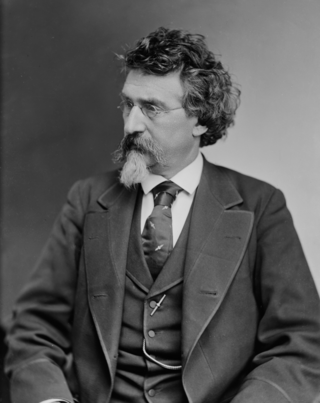
Mathew Benjamin Brady was an American photographer. Known as one of the earliest and most famous photographers in American history, he is best known for his scenes of the Civil War. He studied under inventor Samuel Morse, who pioneered the daguerreotype technique in America. Brady opened his own studio in New York City in 1844, and went on to photograph U.S. presidents John Quincy Adams, Abraham Lincoln, Millard Fillmore, Martin Van Buren, and other public figures.

The American Civil War was the most widely covered conflict of the 19th century. The images would provide posterity with a comprehensive visual record of the war and its leading figures, and make a powerful impression on the populace. Something not generally known by the public is the fact that roughly 70% of the war's documentary photography was captured by the twin lenses of a stereo camera. The American Civil War was the first war in history whose intimate reality would be brought home to the public, not only in newspaper depictions, album cards and cartes-de-visite, but in a popular new 3D format called a "stereograph," "stereocard" or "stereoview." Millions of these cards were produced and purchased by a public eager to experience the nature of warfare in a whole new way.

William Henry Jackson was an American photographer, Civil War veteran, painter, and an explorer famous for his images of the American West. He was a great-great nephew of Samuel Wilson, the progenitor of America's national symbol Uncle Sam. He was the great-grandfather of cartoonist Bill Griffith, creator of Zippy the Pinhead comics.

Alexander Gardner was a Scottish photographer who immigrated to the United States in 1856, where he began to work full-time in that profession. He is best known for his photographs of the American Civil War, U.S. President Abraham Lincoln, and of the conspirators and the execution of the participants in the Lincoln assassination plot.
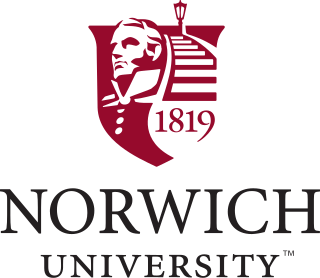
Norwich University – The Military College of Vermont is a private senior military college in Northfield, Vermont. It is the oldest private and senior military college in the United States and offers bachelor's and master's degrees on-campus and online. The university was founded in 1819 in Norwich, Vermont, as the American Literary, Scientific and Military Academy. It is the oldest of six senior military colleges and is recognized by the United States Department of Defense as the "Birthplace of ROTC".

War photography involves photographing armed conflict and its effects on people and places. Photographers who participate in this genre may find themselves placed in harm's way, and are sometimes killed trying to get their pictures out of the war arena.

Timothy H. O'Sullivan was an American photographer widely known for his work related to the American Civil War and the Western United States.
Maison Bonfils was a French family-run company producing and selling photography and photographic products from Beirut from 1867 until 1918, from 1878 on renamed "F. Bonfils et Cie". The Bonfils ran the first and, in their time, most successful photographic studio in the city. Maison Bonfils produced studio portraits, staged biblical scenes, landscapes, and panoramic photographs.
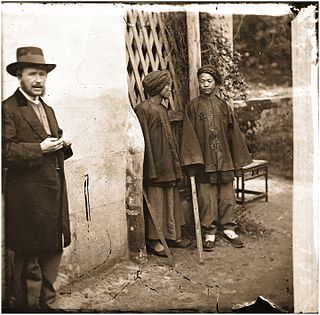
John Thomson FRGS was a pioneering Scottish photographer, geographer, and traveller. He was one of the first photographers to travel to the Far East, documenting the people, landscapes and artefacts of eastern cultures. Upon returning home, his work among the street people of London cemented his reputation, and is regarded as a classic instance of social documentary which laid the foundations for photojournalism. He went on to become a portrait photographer of high society in Mayfair, gaining the royal warrant in 1881.

Look was a biweekly, general-interest magazine published in Des Moines, Iowa, from 1937 to 1971, with editorial offices in New York City. It had an emphasis on photographs and photojournalism in addition to human interest and lifestyle articles. A large-sized magazine of 11 in × 14 in, it was a direct competitor to market leader Life, which began publication 3 months earlier and ended in 1972, 14 months after Look shut down.
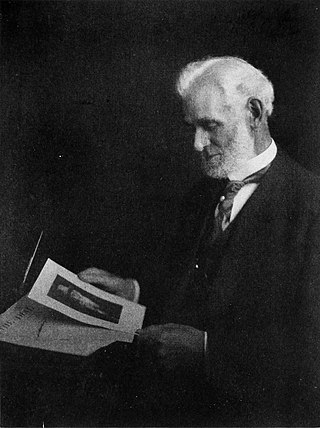
Francis Fisher Browne was an American editor, poet, and literary critic. Browne was one of the founders and later, an honorary member of the Chicago Literary Club, the Caxton Club (Chicago) and The Twilight Club of Pasadena (California). He served as the Chairman of Committee on Congress at the World's Congress Auxiliary of the Columbian Exhibition, in the summer of 1893.
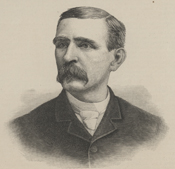
Thomas Henry Bayly Browne was a Virginia lawyer, Confederate veteran and two-term Republican member of the United States House of Representatives from Virginia's 1st congressional district (1887–1891).
Oscar Gleason Mason, better known as O. G. Mason, was an American photographer and radiographer. For most of his professional life, O. G. Mason directed the photographic department of Bellevue Hospital in New York City. He retired from this position in 1906.

George Smith Cook was an early American photographer known as a pioneer in the development of the field. Primarily a studio portrait photographer, he is the first to have taken a photograph of combat during a war: he captured images in 1863 of Union ironclads firing on Fort Moultrie in South Carolina during the Civil War.

Charles Austin Coolidge, Jr. was a United States Army soldier who served in the American Civil War, the American West, Spanish–American War, and in Asia before retiring in 1903 as a brigadier general.
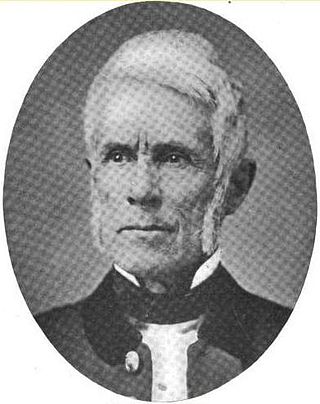
Alonzo Jackman was a Vermont educator and military officer. He is prominent for developing and implementing a system for receiving and training troops for the Union Army during the American Civil War, and for commanding troops on the Vermont border with Canada following the St. Albans Raid.
Frank Chalfant Gaylord II was an American sculptor best known for "The Column", a sculptural tableau of United States soldiers and sailors which is part of the Korean War Veterans Memorial in Washington, D.C.

Edward Higginson Williams was an American physician and railroad executive known for his philanthropy.
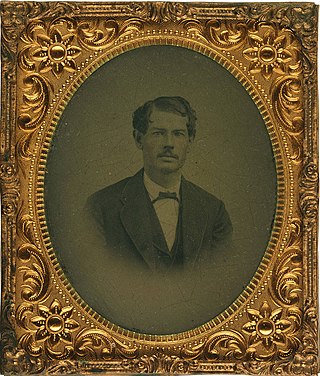
William J. Oliphant (1845–1930) was an American Confederate States Army veteran and photographer from Austin, Texas. He published the first photographs of buffalo hunts in North America.

Francis V. Randall was an attorney, farmer, college administrator, and military officer from Vermont. A Union Army veteran of the American Civil War, he was most notable for his service as commander of the 13th Vermont Infantry Regiment during the war and his post-war appointment as vice president of Norwich University.

















